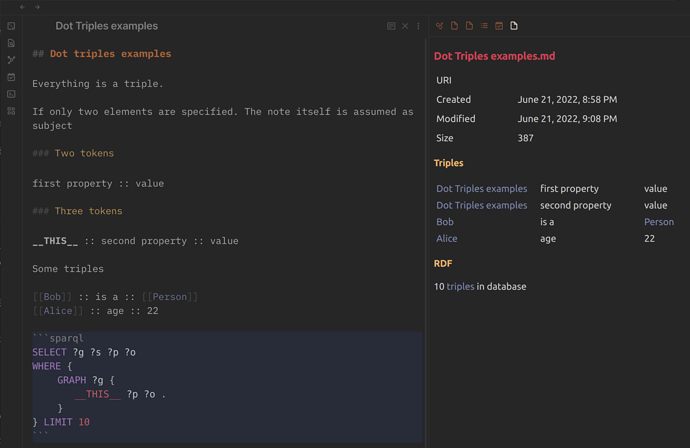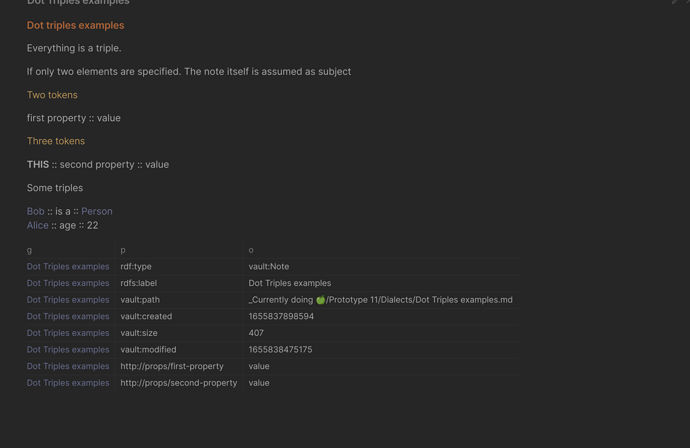Link is the big feature that lead me into using obsidian, just because linking knowledge and having backlinks as a first class citizen easily connect things. I was totally sold on the graph view !
However as the number of notes i have grows with the number of meetings, projects, people, organizations and technologies i take notes on, the global graph itself became very cluttered, and even the local graph became quite difficult to sort out. Adding colors to nodes did the trick for some time but i fear that graph views quickly becomes just nice for screenshots but not actually very exploitable.
The main reason for the graph view to quickly reach its limit is that instead of being a canvas where i can organise notes spcially myself and that view get saved it is laid out automatically. And there is no way to lay out the notes in any smart way automatically because all notes and links just have the meaning of “linked to”.
Linking two notes to an intermediary note just completely loose the benefit of direct linking and is more like the work around that non graph database uses as “join table”, it will clutter the graph view even more.
I think the key feature in obsidian being the links, the product should embrace everything that makes the success of graph database. Links should be typed so that rich semantic queries can be achieved in the search. Optionally in the future they could hold parameters or link to their own note or a note could describe the link type. But semantic linking seems to me the single most important thing to begin with.
And no matter what theory says about what kind of links should exist between notes, obsidian is built on the concept that people decide their own workflows, so for me what kind of meaning the links have is something that must be left for the user to decide, for example between a #project note and #person note, i could have several link, one linked as project lead, one linked as analyst, or more general links like works on, works for to link organsations, implement link for a product linking to a research topic.
This product : https://heptabase.com/ implements the graph view as an actionnable view that instead of being automatically laid out are infinite views the user can add the notes and organize them spacially into, it also has some typed link supports. Such a kind of user-organized view allows to make timeline or even kanban without any need of plugin support, just by user’s own visual conventions.
Those are the two linked topic i would love to see obsidian move to : semantic links and the ability to not just save the graph view but make it my own canvas where i can layout (and see!) my notes inside, saving dashboards for later use.
 … I would have completely overlooked breadcrumbs if it weren’t for your comment. i had taken a look at it initially but it had seemed it was only for a parent-child like hierarchy … but i had a look at its wiki page again after your comment … and it is almost exactly what i wanted when combined with dataview inline syntax and juggl plugin.
… I would have completely overlooked breadcrumbs if it weren’t for your comment. i had taken a look at it initially but it had seemed it was only for a parent-child like hierarchy … but i had a look at its wiki page again after your comment … and it is almost exactly what i wanted when combined with dataview inline syntax and juggl plugin.


